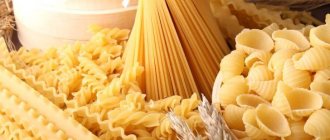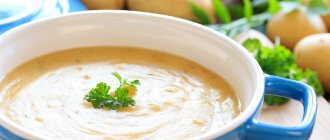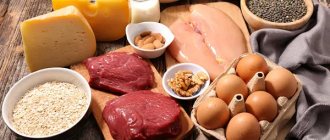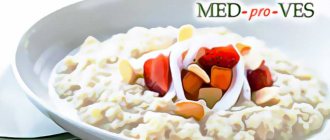About the benefits of durum wheat pasta
First of all, it must be said that pasta is different from pasta. Pasta made from durum wheat is considered the healthiest and highest quality. It's all about the different carbon structure of durum and soft wheat. Hard cereals contain crystalline starch, while soft cereals contain amorphous starch. During the grinding of durum wheat grains, all useful minerals, vitamins B, E, PP and tryptophan - an amino acid, remain in the flour. After grinding soft cereals, there is practically nothing left in their composition except starch and gluten, which are the causes of extra pounds.
The benefits of durum wheat pasta are obvious. Such products retain iron, manganese, potassium, phosphorus, natural fiber and less than 1% fat.
Now let’s study together whether you can really eat pasta without harming your figure?
How much pasta is there?
If you don't play sports . According to international dietary recommendations, foods high in starch - potatoes, bread, rice, pasta - should account for at least a third of the food we eat every day.
If we are talking about pasta, then you should cook no more than one cup (200 ml) per person. After all, pasta contains a lot of carbohydrates. No matter how slowly pasta is digested, if you overeat it regularly, you can still gain weight.
If you are an athlete . Professional triathlon coach Chrissie Wellington advises athletes who train for multiple days in a row (or compete in endurance sports like cycling) to consume 60-70% of their calories from carbohydrate-rich foods. For example, elite Spanish athletes (taekwondo, judo and boxing) prefer to get carbohydrates from pasta and cereals (although they still eat less of them than they should, according to scientists).
But here it is important to understand that carbohydrates have a low glycemic index - this means that it is better to eat pasta before training. After an intense workout, it makes sense to eat foods with a high glycemic index, like white wheat bread.
It is important to remember that different sports require different physical activity, and all athletes are different. So it’s best to discuss the question of whether it’s worth including pasta in your diet (and if so, in what volume) with your trainer.
Counting calories
First, let's look at calories, because pasta is considered a filling and energy-rich food. So how many calories are in durum pasta? Typically, a high-quality product has no more than 350 kcal per hundred grams in dry form, and when boiled this figure drops to 80 kcal. As you can see, pasta made from durum wheat cannot be called high-calorie.
Counting carbohydrates
Now let's digest the pasta. The digestive process boils down to the conversion of carbohydrates into glucose, which provides energy to the entire body. The pancreas is responsible for glucose balance and produces insulin. Violation of this balance and an excess of carbohydrates threatens obesity. Let's now find out how many carbohydrates are in durum pasta.
Of course, it all depends on the brand and type of paste. On average, this figure ranges from 64.5 to 71.5 per 100 grams of dry product. The same hundred grams contain 30% of the daily requirement of carbohydrates, which means that if you eat pasta in moderation, and not three times a day, you can even lose a couple of extra pounds. In fact, the Mediterranean diet is based on this. But here it is important to take into account another important point. The Italians gave it the name "Al Dente".
We calculate the glycemic index (GI)
It is also necessary to talk about such a phenomenon as the glycemic index. According to the medical reference book, this is “an indicator that reflects the effect of food on blood sugar levels.”
For pure glucose it is equal to 100 units, for a chocolate bar - 70, for sweet fruits - about 50, in fish and meat - less than 10. For most people, low GI foods are more preferable for the daily diet. They do not affect blood sugar levels and do not add extra pounds to the human body.
Pasta made from durum wheat has a medium GI (50-60), while soft varieties have a higher glycemic index (more than 70).
It's all about the pasta
— It is known that Italians love pasta, but at the same time they do not lose their enviable slimness. Perhaps you have some secret?
— Italians, like all residents of Mediterranean countries, not only rarely face the problem of obesity, but suffer much less:
- cardiovascular diseases,
- diabetes,
- malignant tumors.
- Is it really the merit of pasta?
— Modern nutritionists have proven that the quality of health is determined by the Mediterranean diet, an important component of which is pasta. It is a preventative measure.
At the end of the last century, continental Europe, succumbing to the rapid passage of time, switched to fast food, which was dominated by red meat, potatoes and baked goods. The Italians, Greeks, Spaniards and French did not take root with sandwiches, hamburgers, and hot dogs “packed” in soft rolls.
The debate about whether fast food products can become a substitute for “full” meals is no longer relevant today. The Americans themselves have taken the path of gradually abandoning cheeseburgers. It is no coincidence that in the East, especially in Japan, in all countries of continental Europe, the USA and Russia, “Mediterranean” restaurants are becoming so popular.
— Could you tell our readers about the principles of Mediterranean nutrition?
1. If we talk about products, then these are:
- vegetables,
- fruits,
- fish,
- seafood,
- bird,
- side dishes, mainly pasta and rice.
Muffins and red meat are rarely included in the diet.
2. The principle of compatibility also applies.
Real Italians perceive spaghetti or pasta as a separate dish. For several years I supervised Italian restaurants in St. Petersburg, and I was always amazed that their visitors ordered a couple of fatty cutlets, sausages or a piece of meat with pasta “with sauce”.
We eat pasta with sauces that contain a lot of herbs, tomatoes, garlic and onions. As a doctor, I can say that these ingredients contain many antioxidants that slow down the aging process of cells.
Pasta
3. There is another secret - olive oil. In order for pasta to become a dietary dish, it must not be mixed with fats of animal origin.
By the way, a small portion of pasta, to which pure extra virgin olive oil has been added, relieves ulcer pain. It has approximately the same effect as almagel.
Toothpaste
The question immediately arises: how long to cook pasta from durum wheat?
Determining the cooking time is not at all difficult; you need to carefully read the label on the package. The manufacturer indicates the specific number of minutes required for this type of pasta to be ready: 5, 9, 12 or sometimes even 15 minutes.
So, to make the pasta “al dente”, elastic to the tooth, cook it exactly one minute less. That is, as soon as the cooking time is up, immediately drain the hot water and enjoy the pasta.
Quantity matters
Biologist-nutritionist Liliana Buccolero notes that pasta is the main source of energy for the body, but you need to be careful with sauces/dressings - it is the sauce that makes the dish heavy, full of fat and difficult to digest (sauces based on butter, cream, fatty meat, cheese ): in this case, the body is unable to process excess calories, and carbohydrates are transformed into fat deposits.
The recommended amount of paste per day is 60-80 g.
An excellent and healthy dressing that does not harm your figure would be extravergin olive oil, vegetables, herbs and seafood.
As Nicola Sorrentino, a nutritionist at the University of Pavia, notes, a healthy and balanced diet should consist of 55% complex carbohydrates. For example, an 80-gram serving of pasta seasoned with olive oil, fresh tomato and two spoons of grated cheese contains approximately 420 kilocalories. By eating about eight of these servings per week, the body's energy needs for glucose are satisfied, but fat deposits are not formed.
Choosing the right pasta
They don't skimp on food. Pasta made from soft wheat varieties is easily distinguishable due to its unnaturally bright color and increased fragility. High-quality durum pasta most often has a golden yellow or cream color, with barely noticeable dark inclusions. These dots indicate the presence of wholemeal flour in the pasta. If the shade of the pasta you bought is almost white or gray, then know: low quality flour was used in the manufacture of this product, and an unnatural yellow color indicates chemical dyes.
When cooked, a high-quality product does not become soft or fall apart, and the water remains relatively clear after cooking.
Where is lift needed?
You can also make something resembling pasta from soft wheat (also called baking wheat). But they will not have any taste - after all, in fact, it is pressed flour. And there’s no need to talk about them retaining their color and shape after cooking.
Article on the topic
Pasta: varieties and methods of preparation. Infographics
Soft wheat varieties are no worse, they are just intended for something else. They are used to make bread and pastries. Without high-quality raw materials, the dough will not rise, and you cannot bake a good loaf. But when producing pasta, this lifting force is not needed. Therefore, it happens that an unscrupulous manufacturer, trying to attract a buyer with a low price, uses the lowest quality grain. Perhaps even fodder, which is usually used to feed livestock. By and large, such a product cannot even be called pasta. Nevertheless, pasta is also made from soft wheat, but it is higher in calories and less healthy. After all, it is precisely such horns or feathers that can cause excess weight and other metabolic disorders.
Flour differs from flour: semolina pasta
Some pasta is made not from flour, but from semolina. Semolina is a method of grinding wheat grains, and the name comes from the Italian “semola” - bran. As a result of processing, the kernel of each grain is separated from the husk, and the core, after coarse grinding, is called semolina flour, and after the finer grain, it is called the usual ordinary flour.
The hardest of all wheat varieties known to agronomists today is durum wheat. This special type of wheat has completely unique properties. Durum flour, unlike bread flour, has a high protein content and a low starch content. Due to the increased content of pigments, durum pasta is very easy to distinguish by its characteristic bright yellow color. Pasta made from durum flour is considered the highest quality and healthiest, because it’s not for nothing that durum wheat has a second name: pasta wheat.
| [:product:alne0032:] | [:product:alne0027:] | [:product:alne0024:] |
Cooking time
The more the pasta is cooked (and the more overcooked), the higher its glycemic index becomes: the level of insulin quickly increases, which slows down muscle metabolism, and a new feeling of hunger also quickly comes. Therefore, the more “undercooked” the pasta, the better for metabolism.
Surely you have already come across such a concept of Italian life as al dente . Even Toto Cutugno sings about them in his song “The Italian”. “Al dente” is undercooked pasta that is hard when bitten (literally translated, the phrase means “by the tooth”).











